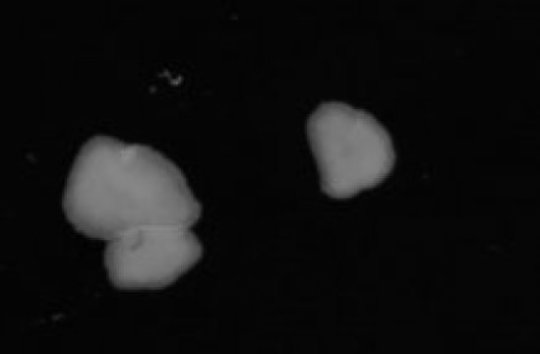[ad_1]
Pioneering research has given a fascinating fresh insight into how animal nervous systems evolved from simple structures to become the complex network transmitting signals between different parts of the body.
The new study used simple multicellular organisms called Placozoa to reveal the beginnings of the nervous systems found in more complex animals.
The international research team, including Professor Gáspár Jékely from the University of Exeter’s Living Systems Institute, found that Placozoa can coordinate their movement and body shape, in the absence of a nervous system, by signalling with small peptides between cells.
The study is published in Current Biology on October 18 2018.
Professor Jékely believes that a peptidergic signalling system allows a very high complexity of behavioural organisation.
He said: “Each peptide can be used individually as a different signal, but the peptides could also be used sequentially or together in different combinations which allows for very high numbers of unique signals between cells. This explains how Placozoans can coordinate sophisticated behavioural sequences such as feeding.”
Placozoans, the simplest of all animals, resemble a small, hairy disc about 1mm in size, with just three cell layers. Although they have no true nerve or muscle cells, they glide across surfaces in the ocean with apparent ease.
The new study explored how this multicellular animal with no nervous system can coordinate all the cells in its body to perform complex behaviour.
They found that Placozoan cells contain a variety of small peptides, made up of 4-20 amino acids that are secreted from one cell and detected by neighbouring cells as a means of communication.
Crucially, this echoes how more complex organisms use similar peptides, known as neuropeptides, for signalling within the nervous system.
Associate Professor Dirk Fasshauer, from the University of Lausanne, Switzerland and co-author of the study said: “These new findings show that outer appearances can be deceiving, because cells that look the same are actually signalling with different molecules and are very likely to have different functions.”
Using synthetically constructed versions of the Placozoan signalling peptides, the researchers could tap into this hidden signalling system to understand the role of each peptide in coordinating movement and body shape.
The experiments revealed that the peptides changed Placozoan behaviour within seconds. Each peptide had a unique effect, which in some cases was very dramatic. The main behavioural changes caused by the peptides included crinkling, turning, flattening, and internal churning, a behaviour associated with feeding.
Dr. Frédérique Varoqueaux, also from the University of Lausanne, added: “It might seem strange to use an animal with no neurons or synapses to study nervous system evolution, but although Placozoans are nerveless, you can still find within their cells the basic molecules needed for communication in complex nervous systems.
“So studying Placozoans can tell us more about the origins of neurons and how they became the body’s control system.”
Story Source:
Materials provided by University of Exeter. Note: Content may be edited for style and length.
[ad_2]















